In the parallelogram ABCD, the line drawn through Q point P on AB, parallel to BC meets AC at Q. The line through Q, parallel to AB meets AD R.
Prove that
APPB=ARRD. 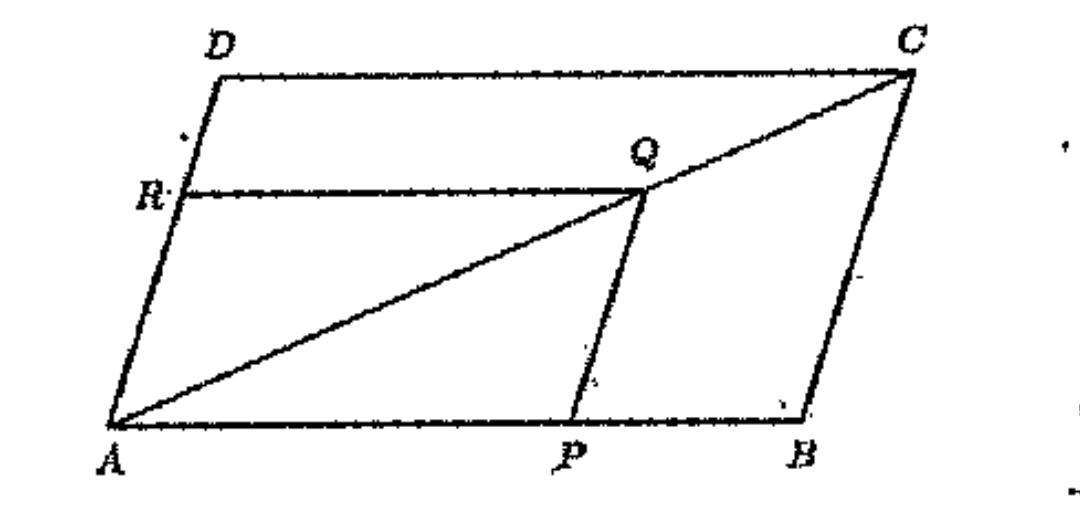 .Solution in Malayalam
.Solution in Malayalam
Step by step video & image solution for In the parallelogram ABCD, the line drawn through Q point P on AB, parallel to BC meets AC at Q. The line through Q, parallel to AB meets AD R. Prove that (AP)/(PB)=(AR)/(RD). . by Maths experts to help you in doubts & scoring excellent marks in Class 9 exams.
Updated on:21/07/2023Topper's Solved these Questions
Similar Questions
In the picture, the square on the hypotenuse of the top most right triangle Is drawn. Calculate the area and the length of a side of the square.
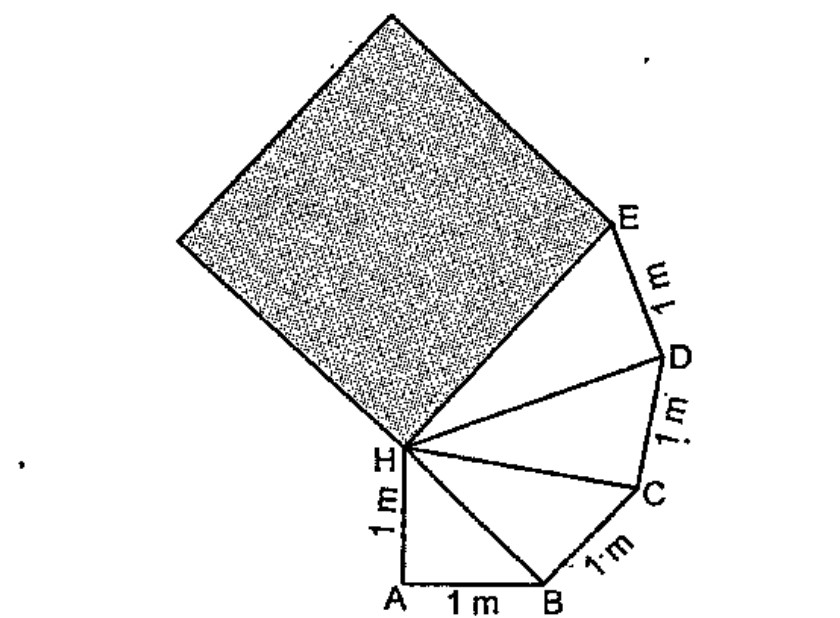 .
.
View SolutionIn rectangle with one side 1cm shorter than the other , take the length of the shorter side as x cm.
i) Taking their perimeters as p(x) cm, write the relation between p(x) and x as an equation.
ii) Taking their areas as a(x) sq.cm, write the relation between a(x) and x as an equation.
iii) Calculate p(1),p(2),p(3),p(4),p(5). Do you see any pattern?
iv) Calculate a(1),a(2),a(3),a(4),a(5).Do you see any pattern?
View SolutionP is the mid-point of side AB of a parallelogram ABCD . A Line through B parallel to PD meets DC at Q and AD produced at R . Prove that (i) AR=2BC (ii) BR=2BQ.
View Solution15 O is the point of intersection of the diagonals AC and BD ofa trapezium ABCD with AB || DC. Through O, a line segment PQ is drawn parallel to AB meeting AD in P and BC in Q. rove that PO=QO ,
View SolutionIn trapezium ABCD, AB∣∣DC and L is the mid-point of BC. Through L, a line PQ∣∣AD has been drawn which meets AB in P and DC produced in Q. Prove that ar (ABCD) = ar (APQD).
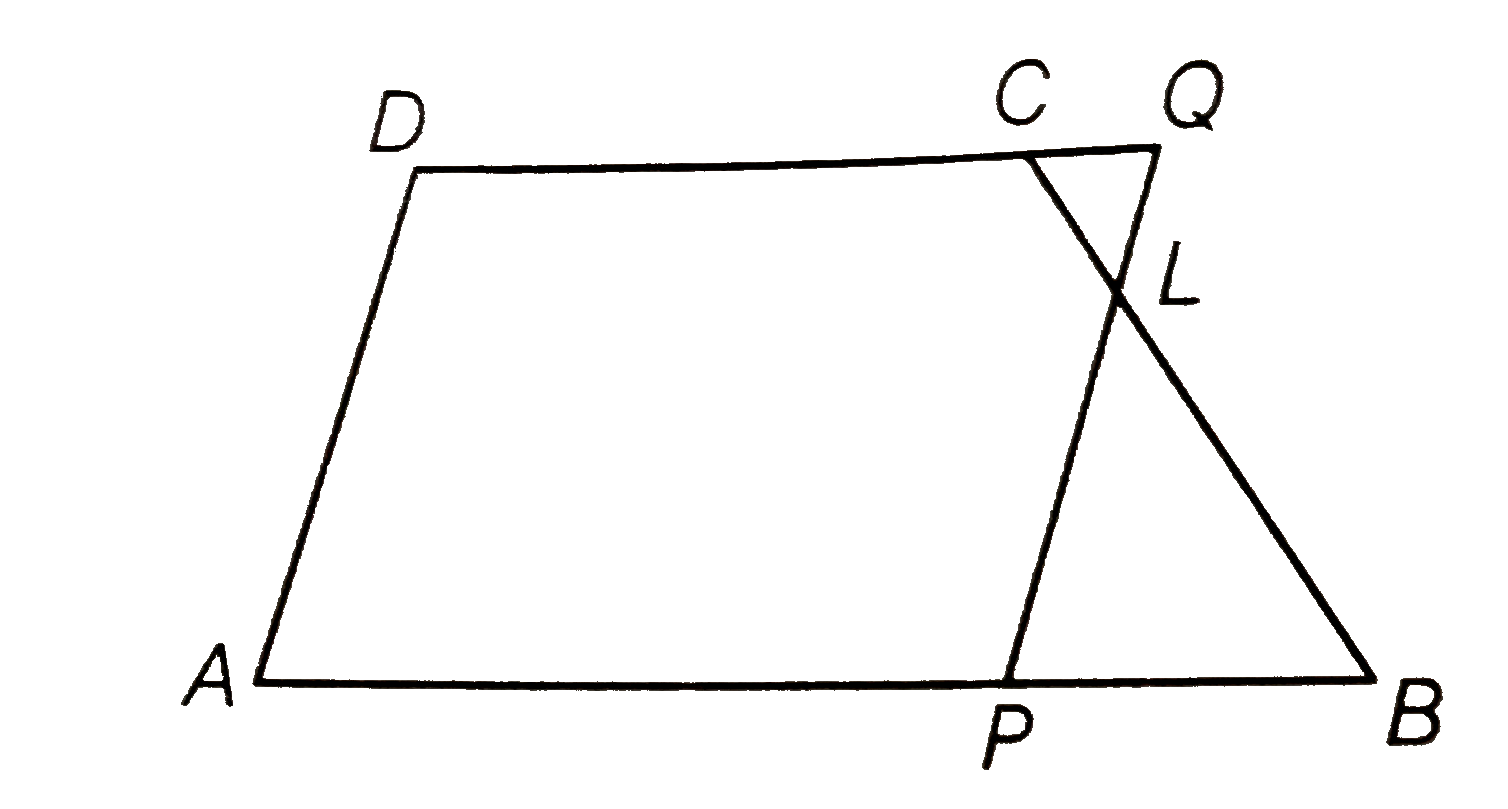
View SolutionO is the point of intersection of the diagonals AC and BD of a trapezium ABCD with AB||DC. Through O , aline segment PQ is drawn parallel to AB meeting AD in P and BC in Q, prove that PO=QO.
View SolutionP is the mid-point of side AB of parallelogram ABCD. A line drawn from B parallel to PD meets CD at Q and AD produce at R. Prove that :
(i) AR = 2BC (ii) BR= 2BQ
View SolutionDetermine the point of symmetry of a regular hexagon.
View SolutionMatch the following Column A to Column B
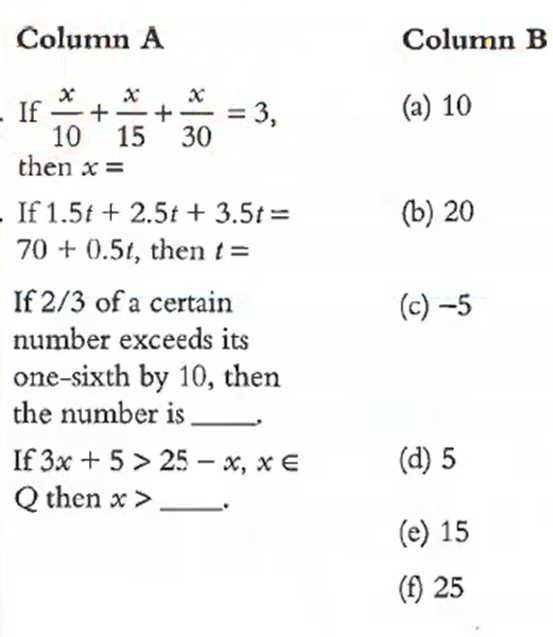
View Solutionसमांतर चतुर्भुज ABCD की भुजा AB को किसी बिंदु P तक बढ़ाया गया है। बिंदु A से CP के समांतर खींची गयी रेखा CB के आगे बढ़ाये गये भाग को Q पर मिलती है। और समांतर चतुर्भुज PBQR को पूरा करती है। सिद्ध कीजिए कि
ar("।।"^(gm)ABCD)=ar("।।"^(gm)BPRQ)
View SolutionABCD is quadrilateral with AB parallel to DC. A line drawn parallel to AB meets AD at P and BC at Q. prove that APPD=BQQC
View SolutionIn trapezium ABCD, AB∣∣DC and L is the mid-point of BC. Through L, a line PQ∣∣AD has been drawn which meets AB in P and DC produced in Q. Prove that ar (ABCD) = ar (APQD).

View SolutionIn the parallelogram ABCD, the line drawn through Q point P on AB, parallel to BC meets AC at Q. The line through Q, parallel to AB meets AD R.
Prove that
APPB=ARRD. .
.
View SolutionIn triangle ABC, P is the mid-point of side BC. A line through P and parallel to CA meets AB at point Q and a line through Q and parallel to BC meets median AP at point R. Prove that :
AP=2AR
View SolutionIn triangle ABC, P is the mid-point of side BC. A line through P and parallel to CA meets AB at point Q and a line through Q and a line through Q and parallel to BC meets median AP at point R. Prove that :
BC=4QR.
View SolutionIn a parallelogram ABCD P is mid-point of side AB. From B a side parallel PD is drawn which cut DC at Q and meet extended line of AD at R then BR = ?
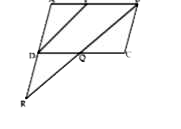
View Solution
